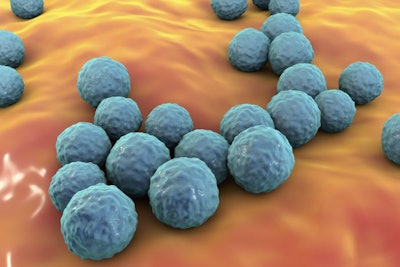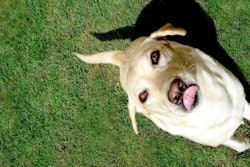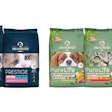
Enterococcus faecium bacteria lead a double life in the pet food industry, as both probiotic in formulations and a substitute for Salmonella in kill step validations. However, liquid inoculants of E. faecium create challenges during safety testing or extrusion. Instead of a liquid carrier for the bacteria, Washington State University scientists developed a method of using freeze-dried E. faecium to streamline pet food safety testing. Freeze-dried E. faecium also may improve the inclusion of the bacteria as a probiotic in pet food, although the technique has not been studied for that use.
“We used E. feacium as stand-in (surrogate) for Salmonella, in food plants to validate the inactivation effect of a certain thermal processing since it is a nonpathogenic (not harmful) and more resistant to heat than Salmonella,” Jie Xu, doctoral student in food engineering at Washington State University, told Petfood Industry.
In her study, Xu found that skim milk serves as a good protectant for E. feacium during the freeze-drying process. When the bacteria was freeze-dried with skim milk, it survived and remained heat resistant longer than bacteria protected by a buffer specifically meant for freeze-drying.
Freeze-dried E. faecium and pet food safety testing
Xu was lead author of the study published in LWT – Food Science and Technology.
“The purpose of using freeze-dried bacteria for treatment validation is to avoid introducing liquid into the food matrix, especially for low-moisture foods,” she said.
Liquid E. feacium inoculants alter moisture content of a product that is to be tested for kill step effectiveness, Xu said. This can change a pet food or treats’ physical characteristics and requires waiting while the product returns to its intended moisture level before testing.
“The method we developed will be faster and easier compared with traditional method,” said Xu.” By using freeze-dried bacteria, we avoid changes in food properties and eliminate the need of extra time for re-equilibration.”
Freeze-dried E. faecium as pet food probiotic
In the Dog and Cat Food Ingredient Center database, at least 26 dry dog foods list E. faecium on their ingredient decks, including products from Orijen, Acana and Taste of the Wild. The bacteria is also included in several wet and dry cat foods.
Some pet food companies are using E. faecium as a probiotic after using genetic selection, Greg Aldrich, PhD, associate professor and pet food program coordinator at Kansas State University told Petfood Industry. There is some indication that the organism from a healthy gut will transfer that to an unhealthy gut.
However, if E. faecium is included in the pet food or treat recipe before extrusion, the probiotic could be killed by the heat, or reduced in effectiveness, said Xu. Developing a more heat resistant way of including the bacteria could improve the probiotic quality of the final product.
“Based on our research, freeze-dried E. faecium with protectant showed a fairly good resistance to heat," she said. "We think it may be a good idea to use freeze-dried E. feacium as a special form of probiotics. However, the functionality of E. feacium after freeze-drying has to be further confirmed.”
“Freeze-dried bacteria with proper protection agents as discussed in this paper, can be added at the beginning of the process and considerable amount of bacteria will be maintained after processing since its high tolerant to thermal treatment,” she said. “Or also, freeze-dried E. feacium can be directly added into final products without increasing the moisture of final pet foods. Further studies are needed for the application in pet food area.”


















